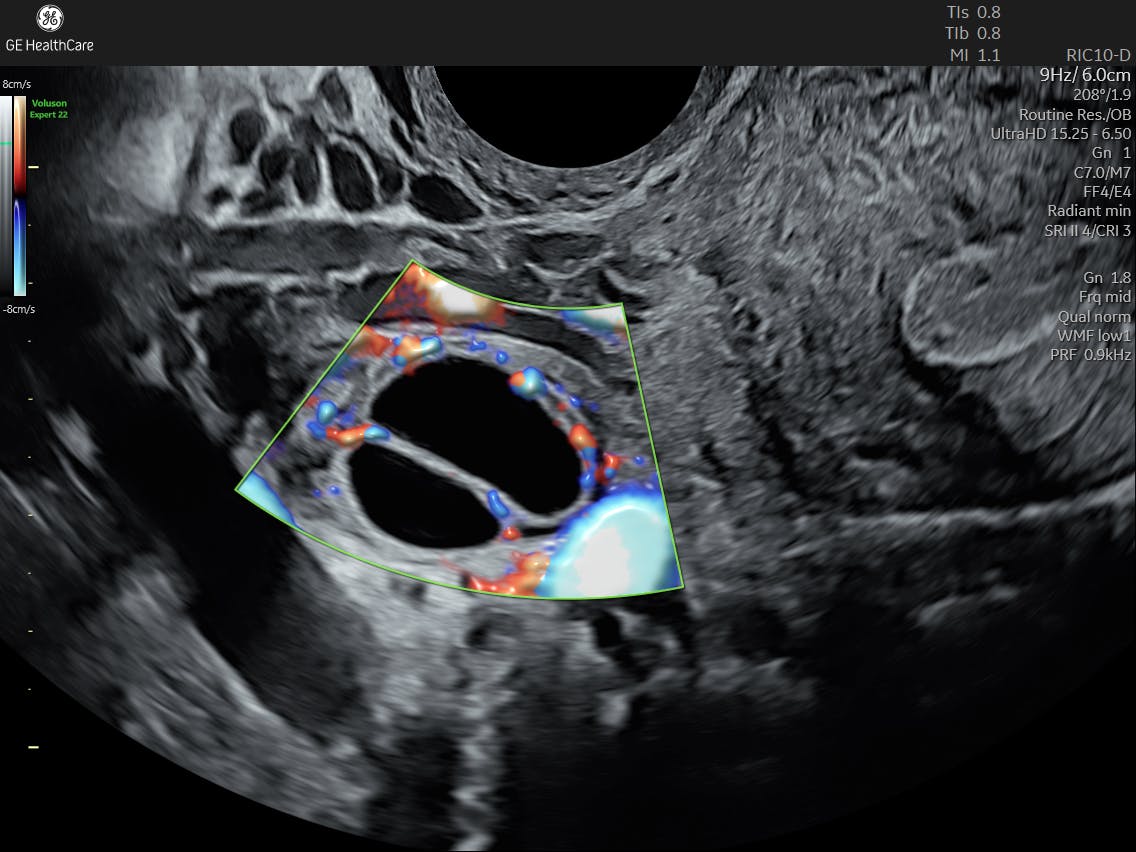Surgery is one of the many possible treatment outcomes for a variety of gynecological procedures and issues, however one that should be understood fully by the patient. Imaging results can provide more data for determination of the best treatment paths.
This collection of frequently asked questions is about ultrasound's role in surgery for gynecological procedures, and how it can aid in providing a starting point for planning the best care for patients.
- Is robotic-assisted endometriosis surgery a viable option for treatment? Robotic-assisted surgery can provide a minimally-invasive surgical option for treatment of endometriosis. This method enhances maneuverability to allow for more precise removal of endometrial lesions, leading to reduced blood loss, less pain, shorter recovery times, and fewer complications. However, suitability of robotic-assisted surgery will depend on the patient's condition, severity of disease, and resources available. Clinicians and patients should always discuss the benefits, risks, and suitability of surgery as a first step in treatment planning.
- What is ultrasound's role in the long-term for successful adenomyosis treatment? Ultrasound supports diagnoses and treatment for adenomyosis, through the use of transvaginal 3D ultrasound and color Doppler overlays. Ultrasound is a radiation-free assessment tool that helps to accurately identify signs of adenomyosis, monitor treatment progress, guide surgical procedures, and follow up for potential complications or recurrence. The ability of ultrasound to provide real-time, detailed views of female reproductive organs aids in the long-term success of treatment by providing accurate, real-time guidance and assessment.
- Does advanced urogynecology technology hold promise for patients and providers? Advanced technologies in the urogynecology field are showing benefits for both patients and healthcare providers. For patients, these innovations include less invasive treatments, reduced recovery times, wearable devices, and improved outcomes. Additionally, cutting-edge technologies enhance diagnostic accuracy, enabling personalized treatment plans tailored to individual needs. For healthcare providers, the advancements provide better visualization and precision during surgeries and improved patient satisfaction from innovative solutions that address the complex challenges of urogynecological conditions.
- What should women know about vaginal prolapse surgery and treatment? Women considering vaginal prolapse treatment should be aware that options range from conservative measures, like pelvic floor exercises and pessaries, to surgical interventions. It's important to recognize that surgery isn't always necessary and might not be the best choice for everyone. Therefore, open discussion with a healthcare provider about symptoms, preferences, the recovery process, potential risks, and expected outcomes, including the possibility of recurrence. Additionally, women should understand the importance of post-operative care to best support their recovery. Ultimately, being well-informed empowers women to participate in the decision-making process to ensure treatment that aligns with their health needs and preferences.
- How to care for transfeminine patients after gender affirmation surgery? Post-operative care for transfeminine patients focuses on managing pain, monitoring surgical sites, and adhering to specific aftercare instructions. Additionally, hormonal therapy management and regular follow-ups with healthcare professionals are vital to address concerns and monitor healing. Emotional support also plays a crucial role, as patients may navigate complex emotional and psychological adjustments post-surgery. Collaboration with multidisciplinary healthcare teams that provide a safe and inclusive environment, with access to mental health resources, and support groups tailored to the transfeminine, will ensure optimal recovery and comprehensive support throughout the recovery journey.
- What is robotic-assisted surgery for endometriosis? Robotic-assisted surgery for endometriosis uses advanced laparoscopy to perform minimally invasive surgical procedures. This consists of robotic arms controlled by a surgeon to perform precise maneuvers, and a high-definition camera for a three-dimensional, magnified view of the surgical site. Potential benefits include reduced blood loss, smaller incisions resulting in minimal scarring, shorter hospital stays, and faster recovery times compared to traditional open surgeries, potentially improving patient outcomes and quality of life for women with endometriosis.
An integral first step in determining a treatment plan is a discussion between patient and physician about the pros and cons of each option. Ultrasound's role in surgery for gynecological conditions is significant and can be a critical factor in both diagnosis and treatment.





